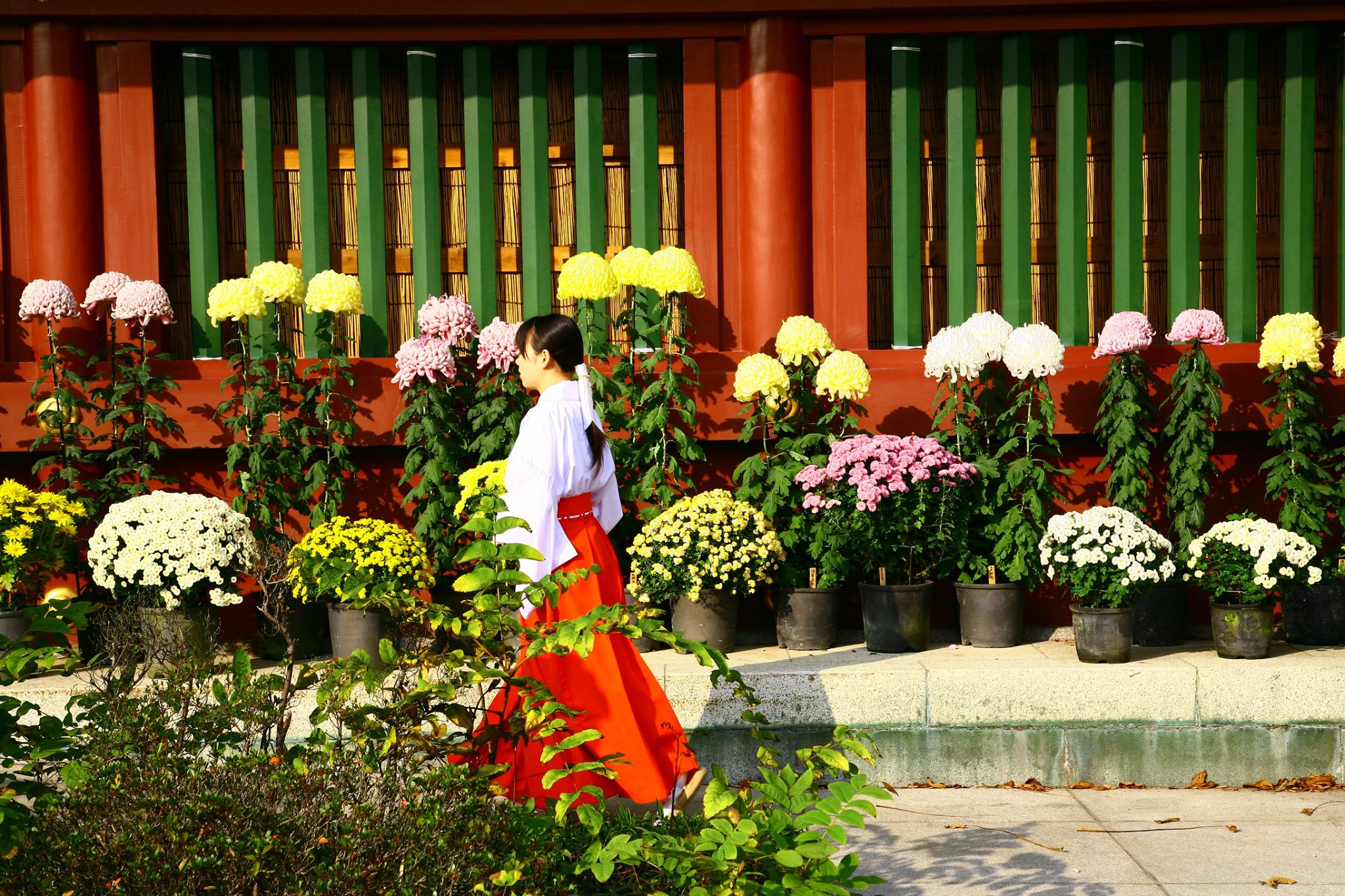Let’s take a peek at our neighbors: a global look at the Chrysanthemum – Japan
25 Apr 2024
The chrysanthemum, also known as the “November 1st flower,” is often associated in our Western culture with All Saints’ Day and the commemoration of the dead. We often use this flower to honor our loved ones and decorate their graves. Do we do this only in the West, or is it the case everywhere in the world? What are the specific customs and uses of chrysanthemums in other countries? Let’s take a peek at our neighbors and discover how the rest of the world appreciates this flower.
Part I – Japan
Today, we dive into the history, traditions, and customs of chrysanthemums in Japan. In Japan, the chrysanthemum, also called ‘Kiku,’ has a completely different meaning and role: it is the symbol of the imperial family. During the Nara period (710 – 793 AD), the chrysanthemum made its entrance into Japan, where it caught the attention of the imperial family. They were immediately fascinated and amazed. Over the years, the chrysanthemum grew into the symbol of the imperial family, laden with meanings of long life and renewal. According to Japanese tradition, even a single petal of this flower, resting at the bottom of a wine glass, could promote life to be long and healthy.
The chrysanthemum is so important in Japan that the imperial throne is named after it – “the throne of the chrysanthemum” – and an annual festival is held to celebrate the flower.
A fun fact: The word ‘Kiku’ not only refers to the plant itself but also serves as a verb for ‘asking,’ ‘listening,’ ‘hearing,’ or ‘working.’ We often see it as the first word in Japanese poetry books.
While the chrysanthemum often has a negative connotation in the West, it is an important symbol in Japan! Let’s give it some more recognition here too, what do you think?


